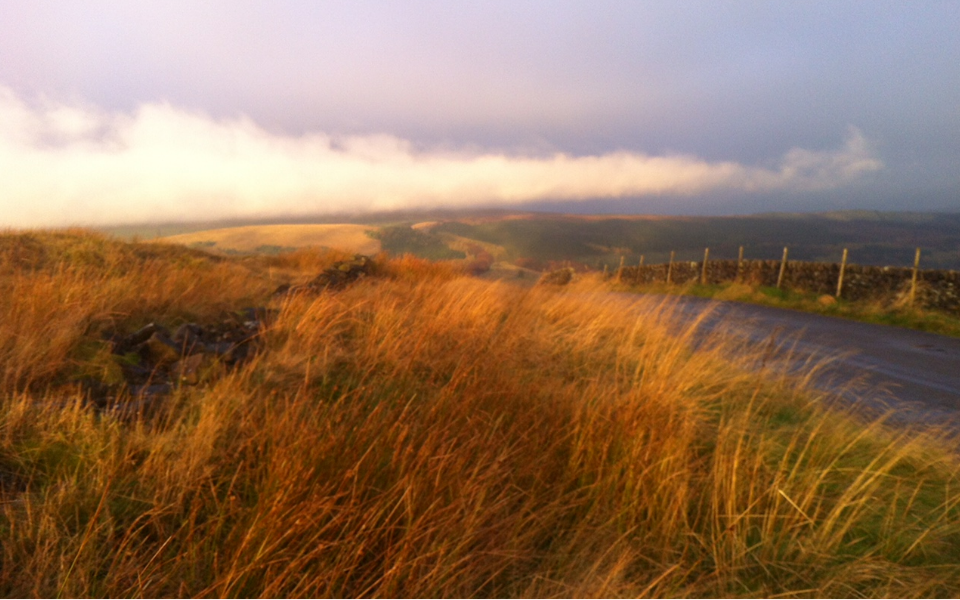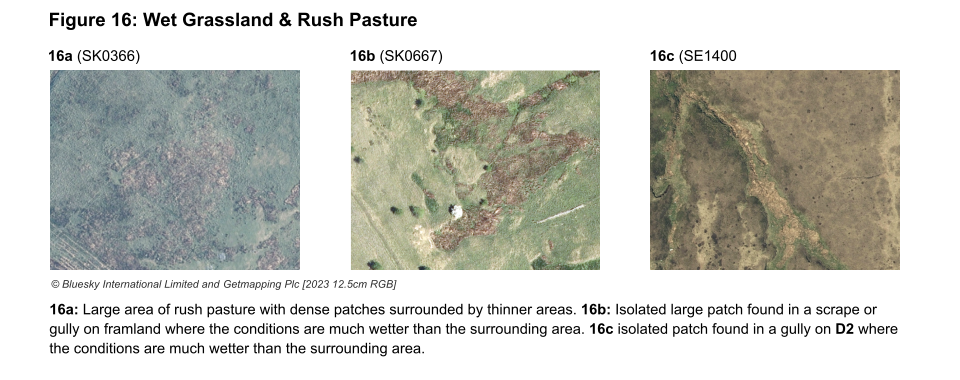# F3 Wetland vegetation: wet grassland and rush pasture (d)

Photo: PDNPA
# Definition of landscape category
F3 Wetland vegetation - Areas of vegetation which are controlled by the permanent or frequent periodic presence of water.
- Wet grassland and rush pasture is the grouping here for all reed swamp/fen/rush pasture/wet grassland
# Aerial Definition

- Google photo sphere Mam Tor (opens new window) Large areas of rush pasture and purple moor grass. Can often be found and apprears 'wetter' and more dense in scrapes and gullies in the landscape.
# In the Peak District
The habitats considered for this assessment fall into two main categories. Firstly, areas of moorland dominated by purple moor-grass – often blanket bog or heath which has been invaded as a result of regular burning over wet soils. Much less extensive however is rush pasture. Occurring on wet and infertile soils, it contains a mixture of grasses (including purple moor-grass), sedges, rushes and also some broadleaved species. Wet grassland and rush pasture covers approximately 1,550 hectares in the PDNP, with 250 ha considered priority habitat. These, often marginal, habitats are important for invertebrate species, several bird species, amphibians and reptiles.